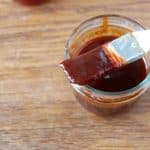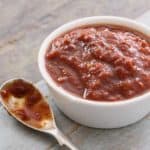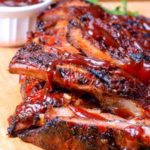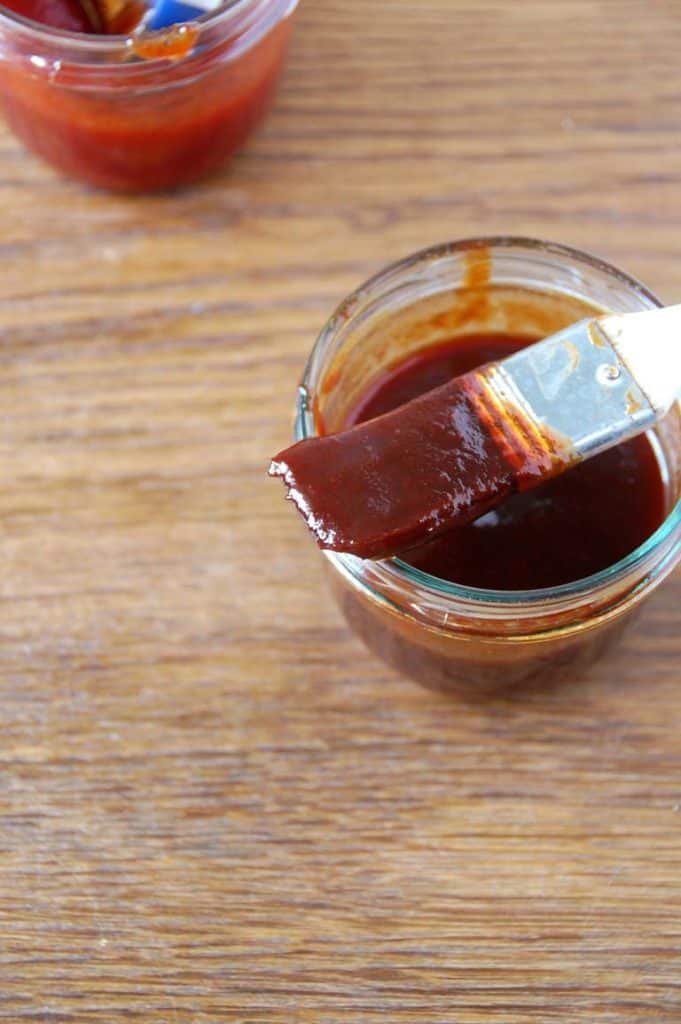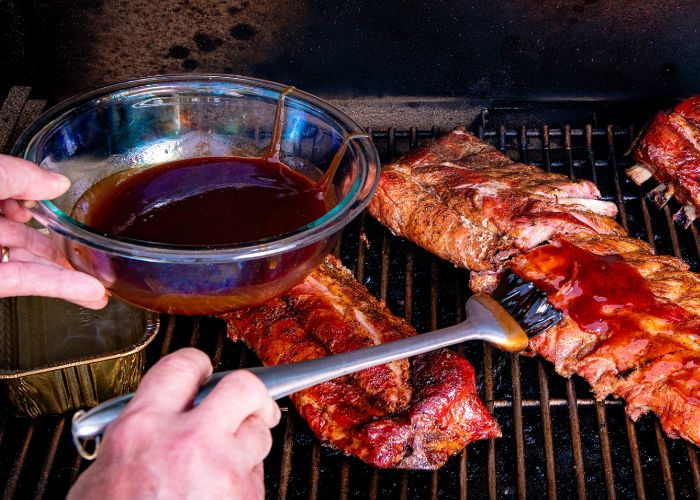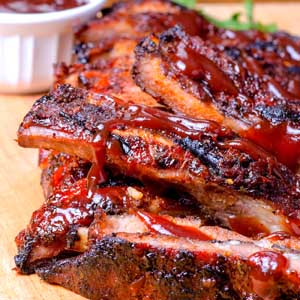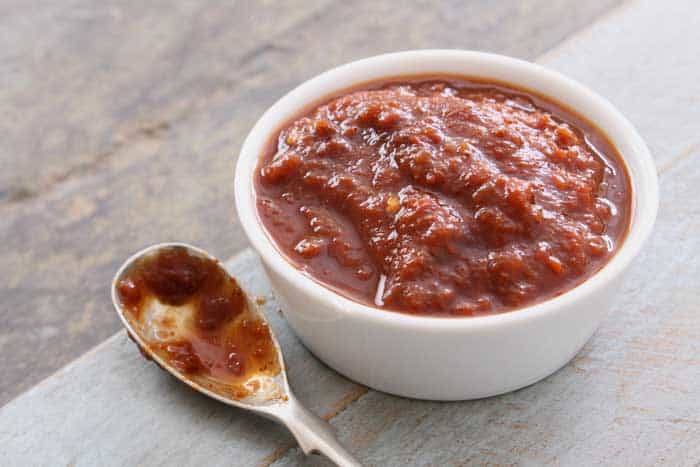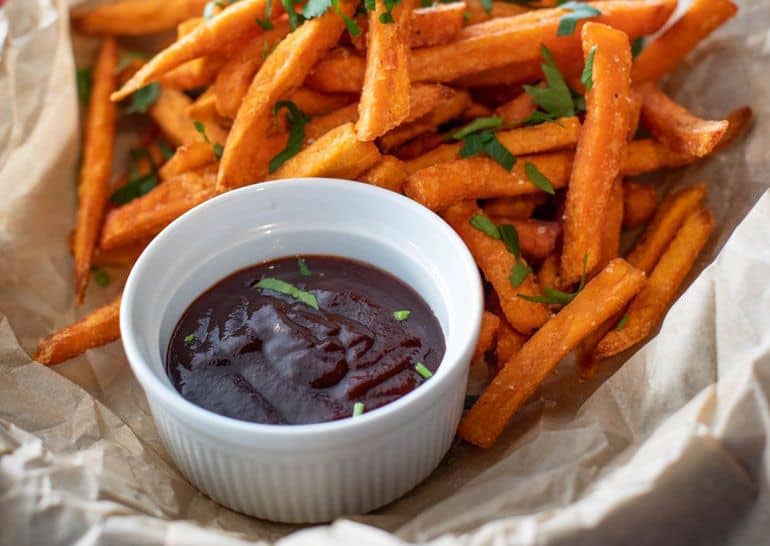Who invented BBQ sauce? Discover everything you wanted to know about barbecue sauce history, from regional styles to recipes.
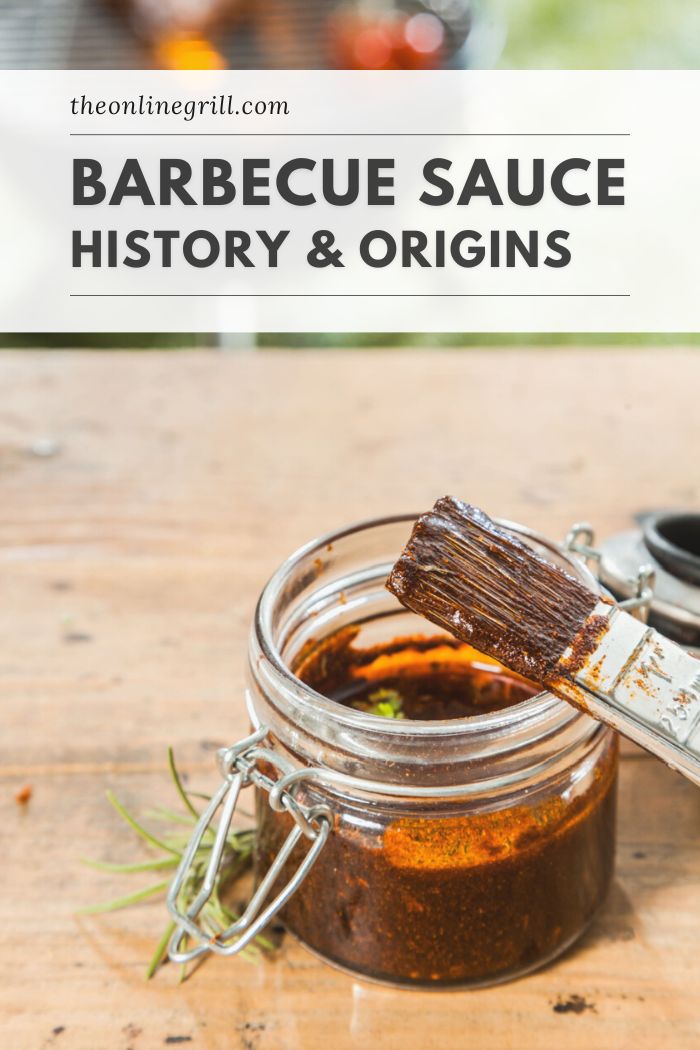
No matter which style of BBQ you favor, we can all agree that barbecue sauce is an integral part of a perfectly finished smoked or grilled dish.
Barbecue sauce is now a staple condiment in the majority of North American households. You can buy any number of variations from the supermarket shelves – but have you ever wondered why there are so many options?
Let’s take a closer look at barbecue sauce history, from when it was first invented to why there are so many varieties. Let’s get saucin’.
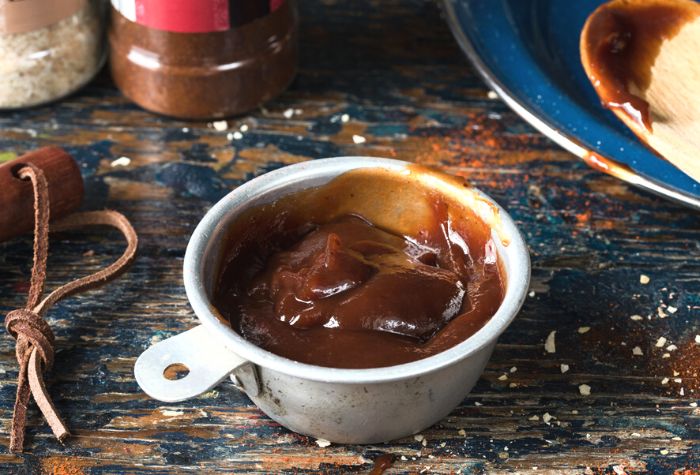
Barbecue Sauce Explained
Barbecue sauce is any sauce that can be used to marinate, baste, or glaze meat cooked barbecue-style or used as a condiment or topping for barbecued meat.
It’s a pretty broad definition of a sauce, but that’s because there is a lot of variety in how it’s made and used.
There are four main varieties of barbecue sauce, each categorized by the base that they use:
- Tomato
- Vinegar
- Mustard
- Mayonnaise
Tomato-based barbecue sauces are the most common type you will come across. They are usually made using ketchup as their starting point as it helps to give the sauce a good consistency and a sweet yet tangy taste.
The ingredients that are added afterward, along with whether the sauce is thickened up with something like molasses, or thinned out with vinegar, is what helps to create the many regional variations.
Vinegar-based sauces are much thinner in consistency and are used more for pork-based barbecue. The spicey and sour flavor of these sauces helps balance out the taste of the fattier meat.
Some vinegar-based sauces will have ketchup added to help thicken them. This also adds some sweetness, but they are still much more of a marinade than a glaze or dipping sauce.
Mustard-based barbecue sauces are only really something seen in South Carolina-style barbecue. Much like the North of the state, South Carolina uses its barbecue sauce as a marinade for dressing a variety of pork cuts.
Yellow mustard is diluted with vinegar to give it a thinner consistency. Then sugar and spices are added to help cut through some of that mouth-puckering tanginess while also providing a bit of heat.
Mayonnaise-based barbecue sauces are a bit of an outlier in the collection. In fact, there is only one region that has a mayonnaise-based sauce, and that’s Alabama.
You’d be forgiven for thinking that it sounds a bit suspect, but when you look at what mayonnaise is (vinegar and oil blended together until they emulsify), it starts to make a bit more sense.
The mayonnaise is seasoned and thinned out with lemon juice and vinegar to make more of a dip consistency. Then it is used to coat smoked chicken to keep the meat moist after hours of low and slow smoking over a pit.
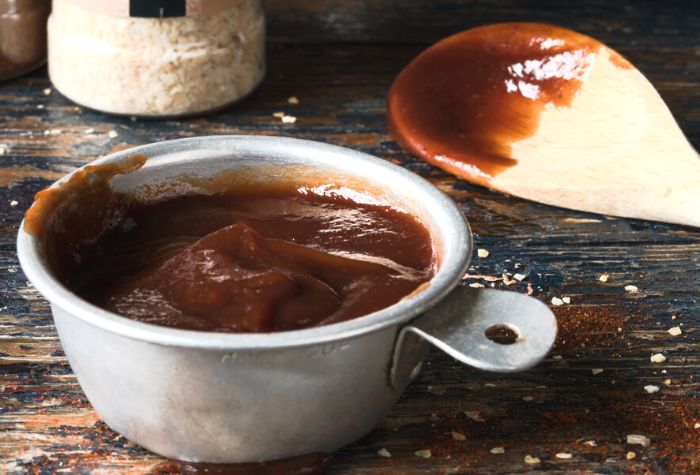
History of Barbecue Sauce
Pinpointing the exact time that barbecue sauce first originated isn’t easy, but we can take a fairly educated guess that it was as early as the 1600s. Writing from that time tells of Dominican missionaries seeing French West Indies cooks adding lemon, lime juice, and hot peppers to barbecued meat. This method of seasoning and serving barbecued meat was brought back to America.
Going into the 1800s, vinegar was more readily available than citrus fruit, and so it became the staple base for making barbecue sauces.
People would then experiment by adding things such as mustard, tomato, or sugar to create their own versions.
The regional differences in barbecue sauce flavors often have to do with the sorts of ingredients that were coming to the areas through trade and the cultural influence of the immigrant population.
For example, Memphis had access to a variety of ingredients that other areas didn’t. It sits on the Mississippi Delta, which was a major trade route for all kinds of exotic ingredients and spices.
The Carolinas had a large German immigrant population, who incorporated their preference for sweet and sour flavors that they were used to into their vinegar-based barbecue sauces.
Types of BBQ Sauce
You might already be aware that there are four main types of BBQ cooking across the US (Kansas City, Memphis, Carolina, and Texas), but did you know that each BBQ style has its own regional variations of barbecue sauce?
North East Carolina
East Carolina BBQ is often joked about, saying they use ‘every part of the hog except the squeal’. They like to keep things simple, so it makes sense that their signature barbecue sauce is a simple mix.
East Carolina-style barbecue sauce is a mixture of cider vinegar with red pepper flakes, black pepper, salt, and spices.
It’s much thinner than most other BBQ sauces, making it more of a ‘mop’ sauce.
This is perfect for using on the specialty of North Carolina BBQ – whole hog barbecues. The vinegar base is perfect for mopping while smoking. It’s also used for mixing into dishes such as pulled pork to help keep it moist and enhance the natural flavor of the smoked pork.
It is an excellent sauce for experimenting with different spices to help build a more complex taste. It’s often left to sit overnight before using so that the flavors from additional ingredients have more time to infuse into the vinegar.
North West Carolina
West Carolina barbecue sauce (also known as Piedmont or Lexington barbecue sauce) has a tangy vinegar base, much like its Eastern rival, but it’s made thicker and sweeter with the addition of tomato ketchup and brown sugar.
This twist on the vinegar-based mop is credited to German immigrants who moved into that region of the state in the early 20th century. Adding ketchup to the tangy vinegar sauce made it so that it was closer to the sweet and sour flavor of dishes they were used to in Germany.
South Carolina
South Carolina barbecue sauce is a tangy yellow mixture that has a vinegar base like its northern counterparts, but with one significant difference: Mustard.
Much like the North West Carolina sauce, we have german immigrants to thank for this variation. The South Carolina Barbeque Association explains that German settlers introduced the use of mustard in cooking to the area back in the early 1700s.
The mix of mustard thinned down with vinegar gives a zingy and spicy taste that works perfectly with pork cuts as well as chicken.
Kansas City
Kansas City-style sauce is what most would consider the ‘traditional’ barbecue sauce.
It’s a rich and thick, sweet yet tangy brown sauce that tastes good on pretty much anything. Kansas City barbecue sauce starts with a tomato ketchup base and sweeteners such as brown sugar or molasses. After that, a whole range of spices and seasonings can be added to give it more heat or a different flavor profile.
One big difference with this sauce compared to some of the others is in the way it should be used. Due to the high amount of sugar in it, it cant be used as a cooking sauce as it risks burning – instead, it is added to the meat after it has been cooked.
St. Louis
If one style sums up the pairing of pork and sauce it’s St. Louis BBQ. The state’s servings of pulled pork and smoked ribs are made for sweet and sticky sauces.
St. Louis-style barbecue sauce is the tangier cousin to the Kansas City sauce. It shares the same base of tomato ketchup and sugar but is thinned down with vinegar. This acid addition tones down the sweetness, making it more of a spicy sweet and sour. It also means that it can be used as a mop while cooking as it doesn’t run the risk of burning.
Memphis
Often featuring pork, Memphis-style BBQ leans heavier on dry rubs than it does sauces or mops. However, their BBQ sauce is more often used for dipping than it is for basting.
Memphis-style sauce is thin and tangy, similar to Western Carolina. It has a sweet tomato and brown sugar base but with a lot more vinegar and mustard to make it really zingy.
Texas
The Texas barbecue menu is primarily beef based. Their barbecue sauce is used more as a marinade or mop rather than a thick serving sauce. It’s a thin sauce with some bold flavors thanks to its slightly old-fashioned recipe.
Texas barbecue sauce starts out like a stock, with vegetables (such as celery, onions, and garlic) cooked in butter before the addition of beef bouillon or beef drippings. Other spices and seasonings are added, along with vinegar, mustard, and Worcestershire sauce.
The mixture is left to simmer until it has cooked off some of the liquid and then blended in a food processor until smooth.
This sauce is then used to baste whichever beef is being cooked.
Alabama White Sauce
Alabama barbecue sauce is easy to spot among the other regional varieties thanks to one immediate difference – it’s a white sauce!
It uses a unique base mix of mayonnaise that has been thinned out with lemon juice and vinegar and heavily seasoned with pepper. The acids give it a delicious tanginess, and the fats in the mayonnaise help to heighten the flavor of meat and keep it moist.
Variations on the recipe add ingredients such as horseradish or mustard to give it a bit more of a kick.
Alabama White Sauce was invented by Robert Gibson back in the 1920s. He loved all things bbq and often spent weekends cooking whole chickens and pork shoulders in a hand-dug pit in his backyard.
To keep the pork shoulders moist, he would dunk them in a mop-style sauce part way through their cooking, but he needed a different sauce to be able to do the same for the whole chickens.
When chickens are smoked for a long time, they can dry out once the fat has cooked off. Robert created the mayonnaise-based mix (mayonnaise is a minimum of 75% fat in most cases) to help infuse moisture into the chicken once it’s pulled from the pit and accentuate the flavor rather than overpower it.
Robert opened his own restaurant in 1925 with his white sauced dipped dishes firmly on the menu. Pitmasters at his famous Big Bob Gibsons Bar-B-Q would take freshly hickory smoked chickens from the barbecue pit and ‘baptize’ them in a vat of the tangy sauce before serving to customers.
Alabama White sauce isn’t just reserved for pit cooking; it can also be used as a drizzling or dunking sauce for other BBQ dishes and even as a salad dressing.


